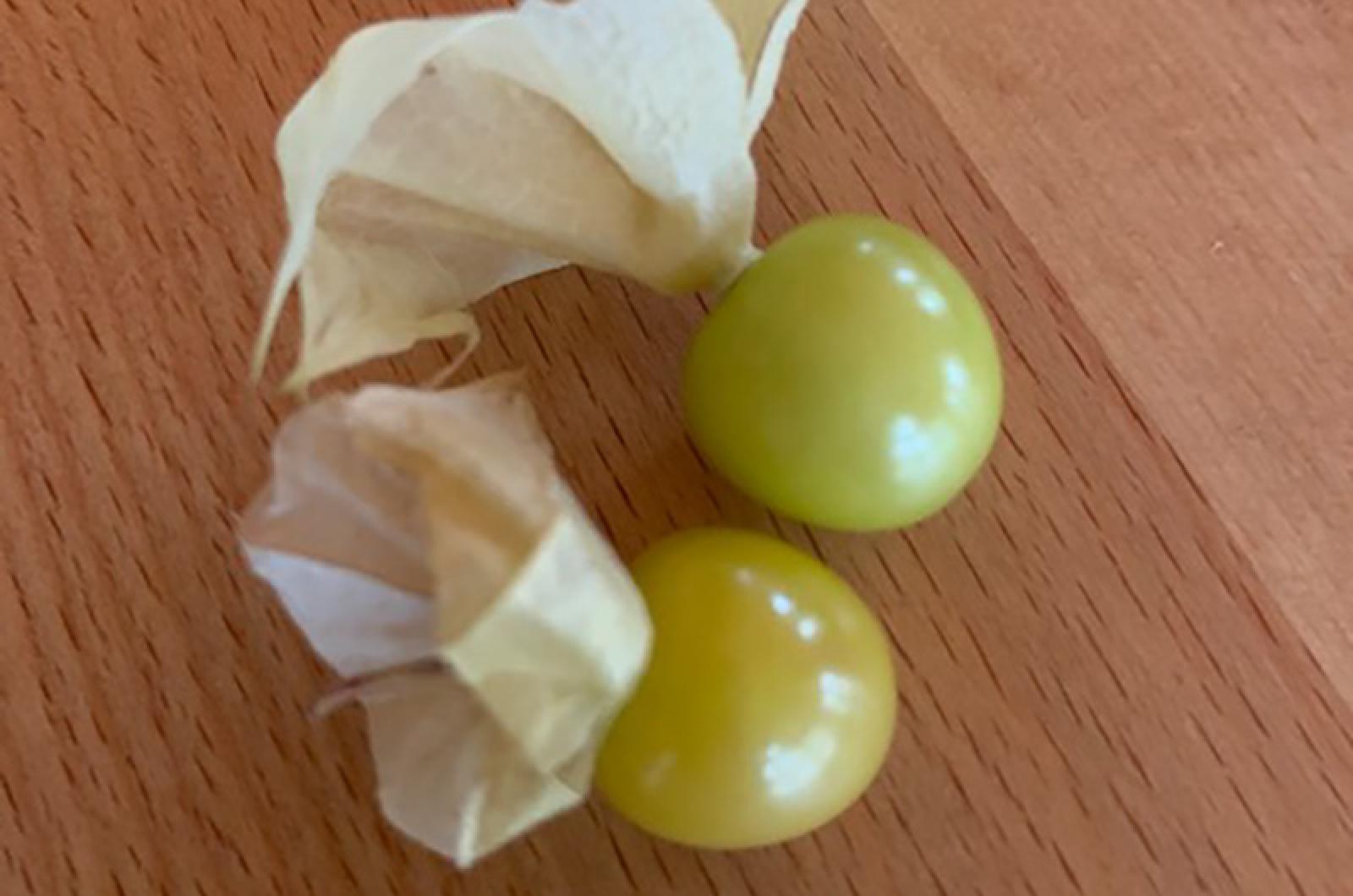Willa Cather seemed to be of two minds when it came to ground cherries.
In My Antonia — a book which, if you haven’t read, is heartily recommended — this passage paints a picture of contentment:
“I sat down in the middle of the garden, where snakes could scarcely approach unseen, and leaned my back against a warm yellow pumpkin. There were some ground-cherry bushes growing along the furrows, full of fruit. I turned back the papery triangular sheths that protect the berries and ate a few. All about me giant grasshoppers, twice as big as any I had ever seen were doing acrobatic feats among the dried vines . . . I kept as still as I could. Nothing happened . . . I was entirely happy.”
In O Pioneers! (another great book, according to Cather fans), another character (Mrs. Bergson) changed the tempo and disparaged the same plant, calling them “insipid ground cherries that grew on the prairie.”
I go with her first restful, delightful image, and can’t be happier to have ground cherries in my garden. Even better, these fruits were a free gift from nature. They came to me as a surprise, volunteering to appear in a pot on my deck where I planted container lettuce.
The origin of the plant is a mystery. Ground cherries of the genus physalis are not common on the Island. The Flora of Martha’s Vineyard lists three introduced and one native variety among our flora. The native is the hairy ground cherry or strawberry tomato which is listed as a historic local (found on Chappaquiddick), however, there are no recent Island records.
While ground cherries are available as a garden plant, and seeds and starter plants can be purchased, I hadn’t eaten them or grown them — much to my regret — since I have lived on my West Tisbury property.
The soil used in my pots was goat compost sourced from Oak Bluffs. Good old goats: in one end and out the other. No matter how the seeds got to my deck, the unexpected appearance of the plant was thrilling to me, since the taste of this fruit is sublime.
Ground cherries, also known as ground tomatoes, husk tomatoes, husk cherries, winter cherries, poha or pohu berries, golden cherries, Cossack pineapples, or Inca berries, are not a well-known crop. As they are not produced on a large-scale basis and don’t last in long-distance transport, they aren’t usually found in supermarkets. If you can get them, it will more likely be at a farm market, or as escapees from a neighborhood garden, as these annuals easily self-seed.
Although considered fruit, they can go both ways in terms of taste: sweet or savory. Eat them like cherries, popping them into your mouth one by one (though only after removing the paper-like husk that surrounds the fruit) or use them in salsa or sauces. You will not be disappointed.
But you will be disappointed (or worse) for another reason, if you are too heedless: they hail from the nightshade group. And,like some nightshades, most parts of the plant can be toxic. Only eat the fruit, and only when it is ripe. You’ll know it’s time to enjoy when the fruits fall from the plant onto the ground; hence the name. Collect them before the critters do, if you don’t want to share the harvest.
Since some now remain on my plant, I expect to be harvesting in the coming week. Hopefully a few cherries will be missed by the neighborhood birds and some new plants make an appearance next year. If they do, it will bring much-needed cheer come spring. I will look for new ground cherry sprouts and celebrate in hopes that this idiom is true:
A cherry year, a merry year; a plum year, a dumb year.
Suzan Bellincampi is executive director of the Felix Neck Wildlife Sanctuary.







Comments (1)
Comments
Comment policy »